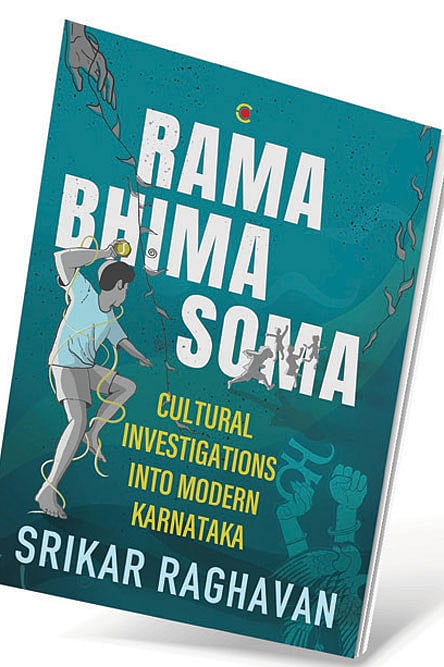Cultural Memory

RAMA BHIMA SOMA is a sprawling, densely packed, genre-defying excavation of Kannada intellectual history. It is, at once, a collection of interviews, a historiographical project, a work of literary criticism, a reckoning with ideological failures, and a deep interrogation of the many identities in Karnataka. It is a book about conversations—unfinished, unresolved—between generations of writers, politicians and revolutionaries.
The book is not an act of cultural nostalgia, but rather, an unearthing of the tangled skeins of cultural memory, political shifts, and literary modernity in South India. It leaves you unsettled and fascinated as it chronicles how late-20th century Karnataka became a crucible of social movements—environmental protests, farmers’ uprisings, feminist assertions, street theatre, Naxalism and student movements—all feeding into a broader political consciousness. At a time when the old feudal structures were gasping their last breaths, the Green Revolution was reshaping rural economies, the Emergency was smothering dissent, there emerged chaluvalis—meaning movement or agitation—that would eventually struggle to sustain its energy. Because these urgent attempts to change the world inevitably ran into people. And people, as it turns out, are messy, prone to infighting and the kind of factional disputes that make enemies out of allies. So, by the time the 1980s and ’90s rolled around, the Left wasn’t necessarily winning. The idealistic efforts to challenge the status quo were politically outmanoeuvred. And in the void left by this disarray, the Hindu Right moved in with the full-throated force of a political machine that understands one thing better than its opponents: narrative coherence. Srikar Raghavan’s look at a Karnataka that once dreamed of radical change is both an elegy and a warning. It is a reminder that history isn’t something that happens—it is something we are constantly shaping, even as we are shaped by it.
Part intellectual travelogue veering from South Canara’s literary and cultural signposts to a modest Marxist library in Mysore and the complex landscape of Kolar’s fractured Dalit identity, and part extended philosophical street fight with the ghosts of history, Rama Bhima Soma is a book about Kannada society thinking about itself, a book that dismantles, and resurrects icons, movements, ideologies. Raghavan rarely settles into reverence in his literary post-mortem of Kannada’s greatest minds—Kuvempu, UR Ananthamurthy, P Lankesh, K Shivarama Karanth—even as he zooms in on overlooked figures like Shankar Mokashi Punekar, a writer whose work, despite its brilliance, has been largely ignored. Raghavan enjoys dwelling on the eternal tension between the elite, cosmopolitan, Sanskritic culture and local, indigenous, often subversive traditions. He teases out broad political themes, including the failure of Kannada socialism through sketches of characters such as socialist politician Gopala Gowda.
2026 New Year Issue
Essays by Shashi Tharoor, Sumana Roy, Ram Madhav, Swapan Dasgupta, Carlo Pizzati, Manjari Chaturvedi, TCA Raghavan, Vinita Dawra Nangia, Rami Niranjan Desai, Shylashri Shankar, Roderick Matthews, Suvir Saran
Raghavan pursues missing voices, questioning why so few women writers occupy central positions in the Kannada canon, and confronts the ideological spectrum in all its messiness, interviewing problematic figures like Srikant Shetty, a Vishwa Hindu Parishad activist. The weaponisation of Kannada identity by right-wing forces, the overlaps between literary nationalism and reactionary politics—all of this is part of the same intellectual ecosystem, and Raghavan refuses to pretend otherwise.
Reading Rama Bhima Soma is like walking into a decades-long argument and realising that no one has left the room. Among the figures who populate these pages are social reformers, radical thinkers, unacknowledged literary craftsmen. At its core, the book remains what Raghavan set out for it to be: “a document of the present, of how we are unwittingly still connected to the past in strange and counterintuitive ways”. n

